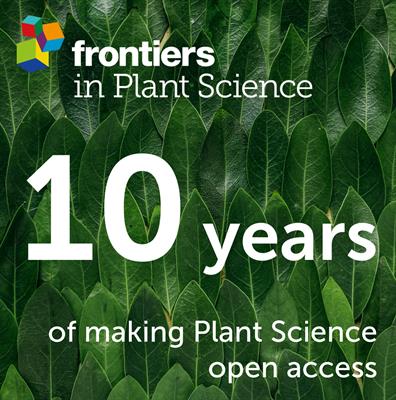Systemic delivery of engineered compact AsCas12f by a positive-strand RNA virus vector enables highly efficient targeted mutagenesis in plants
IF 4.1
2区 生物学
Q1 PLANT SCIENCES
引用次数: 0
Abstract
Because virus vectors can spread systemically autonomously, they are powerful vehicles with which to deliver genome-editing tools into plant cells. Indeed, a vector based on a positive-strand RNA virus, potato virus X (PVX), harboring SpCas9 and its single guide RNA (sgRNA), achieved targeted mutagenesis in inoculated leaves of通过正链 RNA 病毒载体系统输送工程化紧凑型 AsCas12f,实现植物的高效定向诱变
由于病毒载体可以自主进行系统性传播,因此是向植物细胞提供基因组编辑工具的强大载体。事实上,一种基于正链 RNA 病毒马铃薯病毒 X(PVX)的载体,携带 SpCas9 及其单导 RNA(sgRNA),在接种的烟草叶片中实现了定向诱变。然而,SpCas9 基因体积较大,在 PVX 载体中不稳定,阻碍了在系统叶片中引入突变。较小的Cas变体是病毒载体介导的基因组编辑的理想工具,但它们的核酸酶活性远低于SpCas9。最近,我们改造了迄今已知的最小的 Cas 蛋白之一 AsCas12f(体积仅为 SpCas9 的三分之一),大大提高了基因组编辑活性。在这里,我们首先证实了包括I123Y/D195K/D208R/V232A在内的工程化AsCas12f变体在水稻中表现出更高的基因组编辑频率。然后,我们通过农渗将携带这种 AsCas12f 变体的 PVX 向量接种到 N. benthamiana 的叶片中。值得注意的是,与PVX-SpCas9不同的是,不仅在PVX-AsCas12f接种的叶片中,而且在接种叶片以上的叶片(上部第四至第六片叶)中都实现了高效的基因组编辑。此外,从系统叶片再生出的基因组编辑芽的比率为 60%,实现了无外来 DNA 的基因组编辑。综上所述,我们的研究结果表明,AsCas12f的体积很小,足以在N. benthamiana系统感染过程中保持在PVX载体中,而且在利用病毒载体进行植物基因组编辑时,工程化的AsCas12f比SpCas9更具优势。
本文章由计算机程序翻译,如有差异,请以英文原文为准。
求助全文
约1分钟内获得全文
求助全文
来源期刊

Frontiers in Plant Science
PLANT SCIENCES-
CiteScore
7.30
自引率
14.30%
发文量
4844
审稿时长
14 weeks
期刊介绍:
In an ever changing world, plant science is of the utmost importance for securing the future well-being of humankind. Plants provide oxygen, food, feed, fibers, and building materials. In addition, they are a diverse source of industrial and pharmaceutical chemicals. Plants are centrally important to the health of ecosystems, and their understanding is critical for learning how to manage and maintain a sustainable biosphere. Plant science is extremely interdisciplinary, reaching from agricultural science to paleobotany, and molecular physiology to ecology. It uses the latest developments in computer science, optics, molecular biology and genomics to address challenges in model systems, agricultural crops, and ecosystems. Plant science research inquires into the form, function, development, diversity, reproduction, evolution and uses of both higher and lower plants and their interactions with other organisms throughout the biosphere. Frontiers in Plant Science welcomes outstanding contributions in any field of plant science from basic to applied research, from organismal to molecular studies, from single plant analysis to studies of populations and whole ecosystems, and from molecular to biophysical to computational approaches.
Frontiers in Plant Science publishes articles on the most outstanding discoveries across a wide research spectrum of Plant Science. The mission of Frontiers in Plant Science is to bring all relevant Plant Science areas together on a single platform.
 求助内容:
求助内容: 应助结果提醒方式:
应助结果提醒方式:


